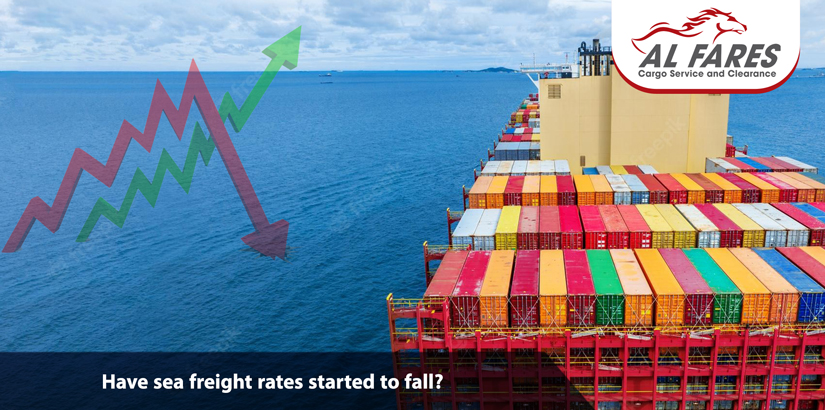Have sea freight rates started to fall?
After a year in which freight rates continued to record new highs and exaggerated, as the cost of sea freight increased by the end of 2021 five times compared to freight prices before the Corona pandemic, sea freight rates began to decline starting from the first quarter of 2022.One of the most important reasons for the decline in sea freight rates globally is the significant increase in inflation, especially after the outbreak of the Russian-Ukrainian war, as the demand for shipping goods decreased in both America and European countries due to this large increase in the rate of inflation.
The increase in oil prices also led to a decrease in land freight operations due to the increase in the cost of trucking, as the rate of truck transportation decreased by up to 22% during the first six months of 2022, which helped direct many exporters to ship their goods by sea freight due to Because it is the lowest in cost, if diesel prices do not decrease in the coming period, this will cause a decrease in land freight operations with an increase in the proportion of sea freight.
We must also consider that the breakthrough that occurred in the supply of containers worldwide due to the decrease in demand for transporting goods, contributed significantly to the decrease in sea freight rates, as the crisis that occurred in the middle of last year due to the shortage of empty containers had the greatest impact. In the increase of sea freight rates between all countries in the world by 500%.
What about car shipping rates?
Car shipping prices by sea, for example, have also fallen by up to 40%, and the main reason behind the drop in shipping prices is due to the decrease in import demand from the countries that export, and on top of those countries is China.However, this decrease in the prices of sea freight for cars, will not have a significant impact on the final price of the car, due to the price increases approved by global car factories on all models of cars they produce, in order to face the wave of rising inflation globally, as well as the rise in production costs The global auto industry suffers from weak supply chains of production components and parts that are used in the automobile industry, as well as the resulting rise in energy prices that has also led to an increase in production costs, and a decline in the quantities produced and exported of cars.
Some companies are also now negotiating shipping agreements that they had previously concluded at the height of the rise in sea freight rates, and this has led to a decrease in the prices of those contracts that were signed several months ago, amounting to between 15% to 20%, and it is expected that more of the cuts later, as things turn in favor of importers more than exporters.
We also do not forget that the increase in the number of ships, which the shipping lines received in the recent period from the global marine manufacturing arsenals, will lead to an increase in the absorptive capacity of the global fleet of ships.
Despite the decrease in sea freight rates, they are still up to two-thirds higher than the value of those prices in the period prior to the Corona pandemic and the Russian-Ukrainian war.


 Track Your Shipment
Track Your Shipment
 Online Enquiry
Online Enquiry
 Sign In
Sign In
 English
English

 Alfares Cargo
Alfares Cargo
 Logistic Informations
Logistic Informations
 2023-06-10
2023-06-10










